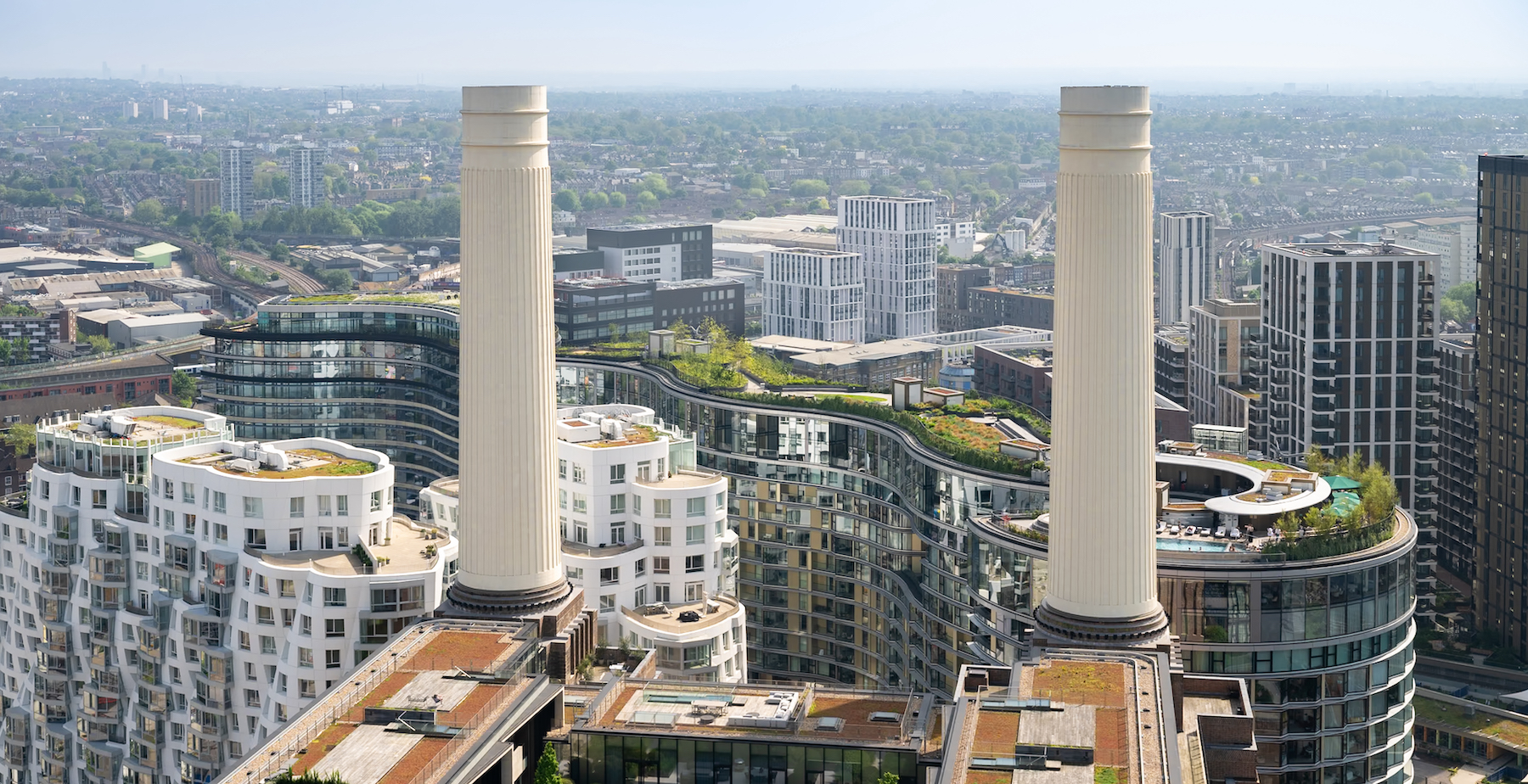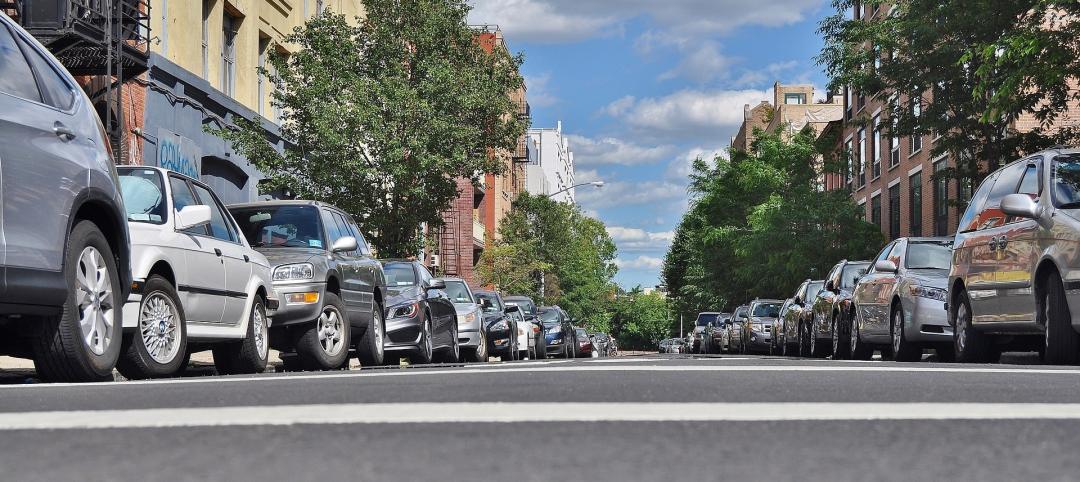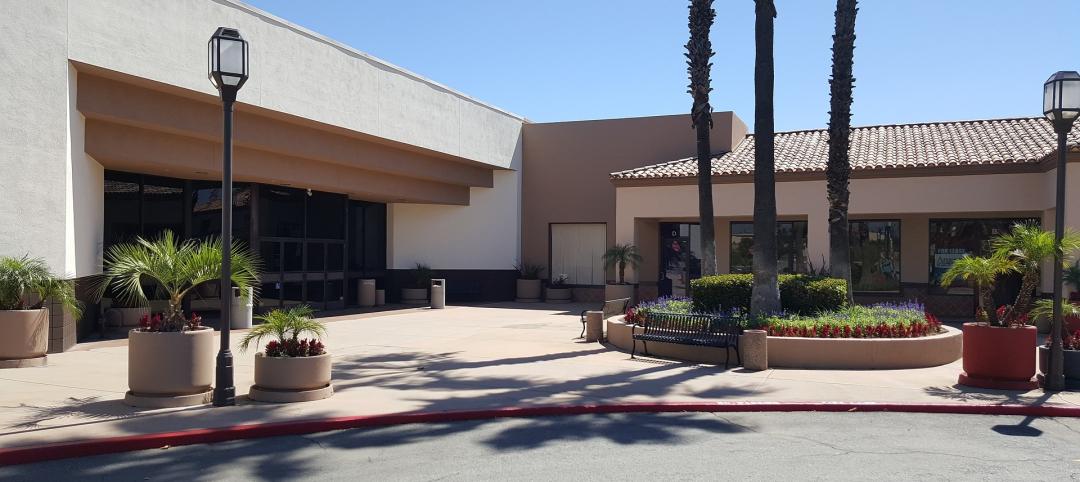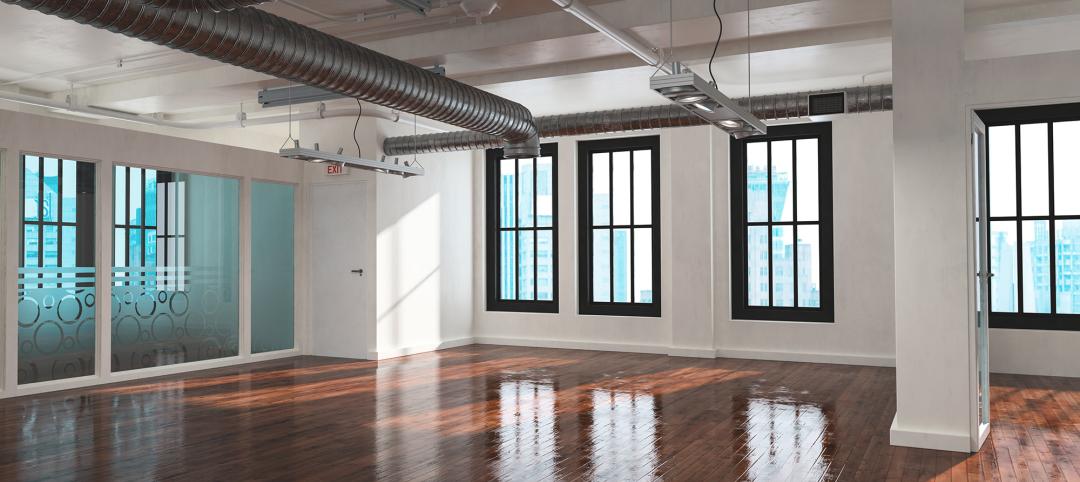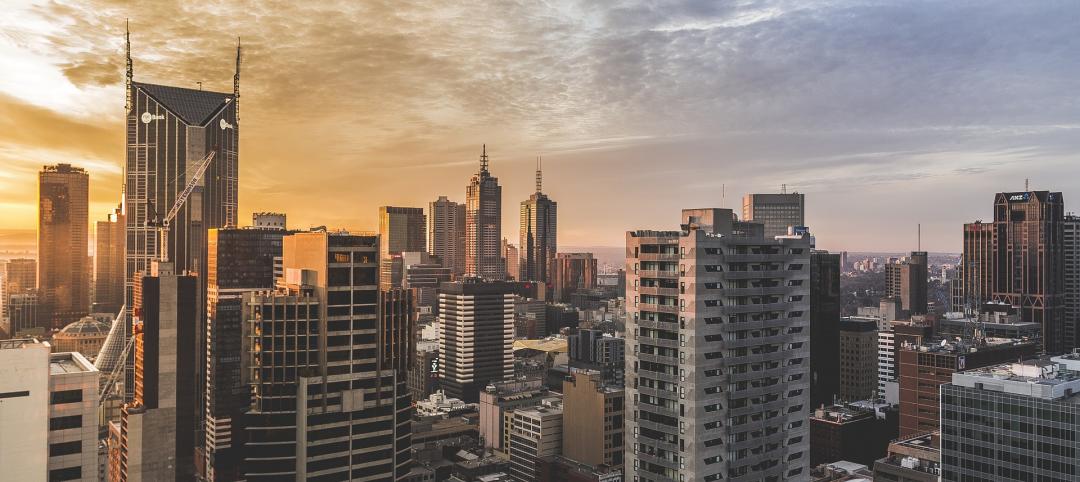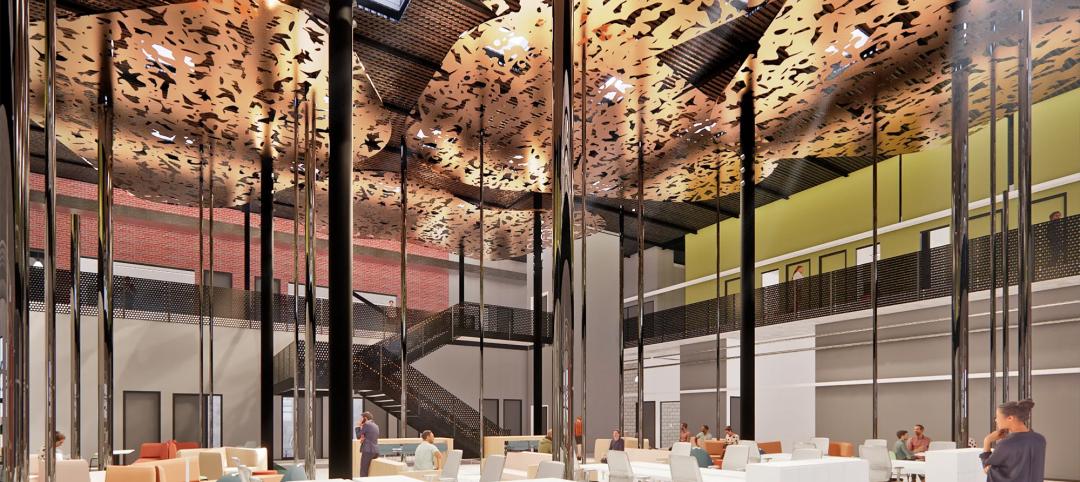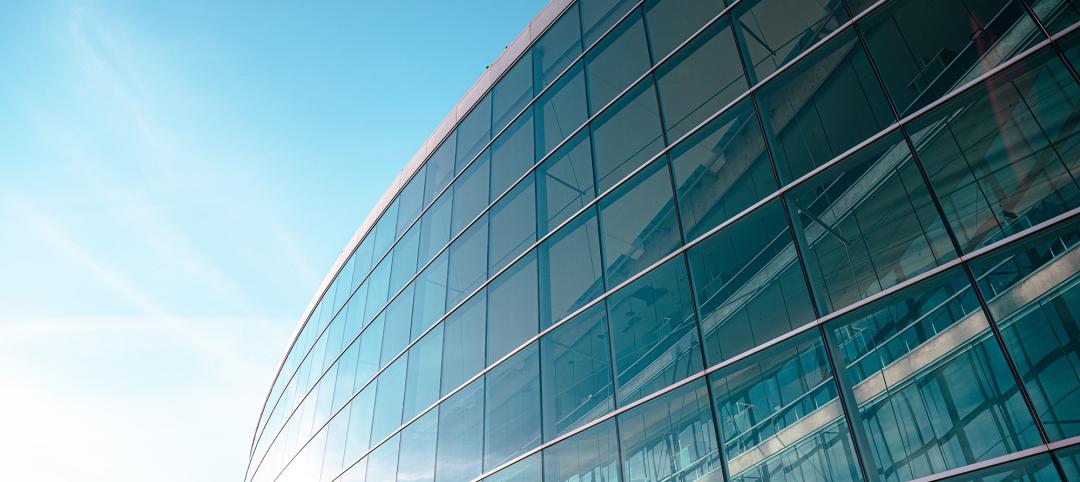The recent completion of two Foster + Partners-designed buildings concludes Phase 3 of the Battersea Power Station masterplan, an eight-phase, $11.5 billion project that is transforming a 42-acre former brownfield site in London. At the heart of the project is the iconic coal-fired power station that opened in full in 1955 but was decommissioned in 1975 and vacated in 2014. The year before, a Malaysian investment consortium entered into an agreement with Ernst & Young to move forward on the redevelopment.
When this mixed-use redevelopment reaches the finish line, it will be home and workplace to 25,000 Londoners, supported by more than 250 retail, food, and beverage venues; a hotel, a medical center, and more than 19 acres of public space with just under 1,500 ft of frontage along the Thames River and a six-acre park. The office district within this redevelopment will have over 3 million sf of commercial space.
Rooftop garden one of the city’s largest
The neighborhood and business quarter that this redevelopment creates will be serviced by a Zone 1 extension to the London Underground Northern Line and the Phase 2 restoration of the Power Station into a mixed-use building that houses Apple’s London campus, retail stores, a cinema, a 24,000-sf food hall, a glass chimney lift, and hundreds of apartments. It opened on October 14, 2022, and is owned by the Malaysian investors.
Phase 3, which just completed, consists of six 17- and 18-story buildings with more than 900 housing units, constructed over a three-story basement. Gehry Partners designed five of the residential blocks, known as Prospect Place and The Flower. Foster + Partners designed the Battersea Roof Gardens building with 436 apartments and a 164-key art’otel London Battersea Power Station. The building is topped by a massive rooftop garden, designed by James Corner Field Operations, with 23,000 plants and 55 trees, as well as a grassy area for social gatherings.
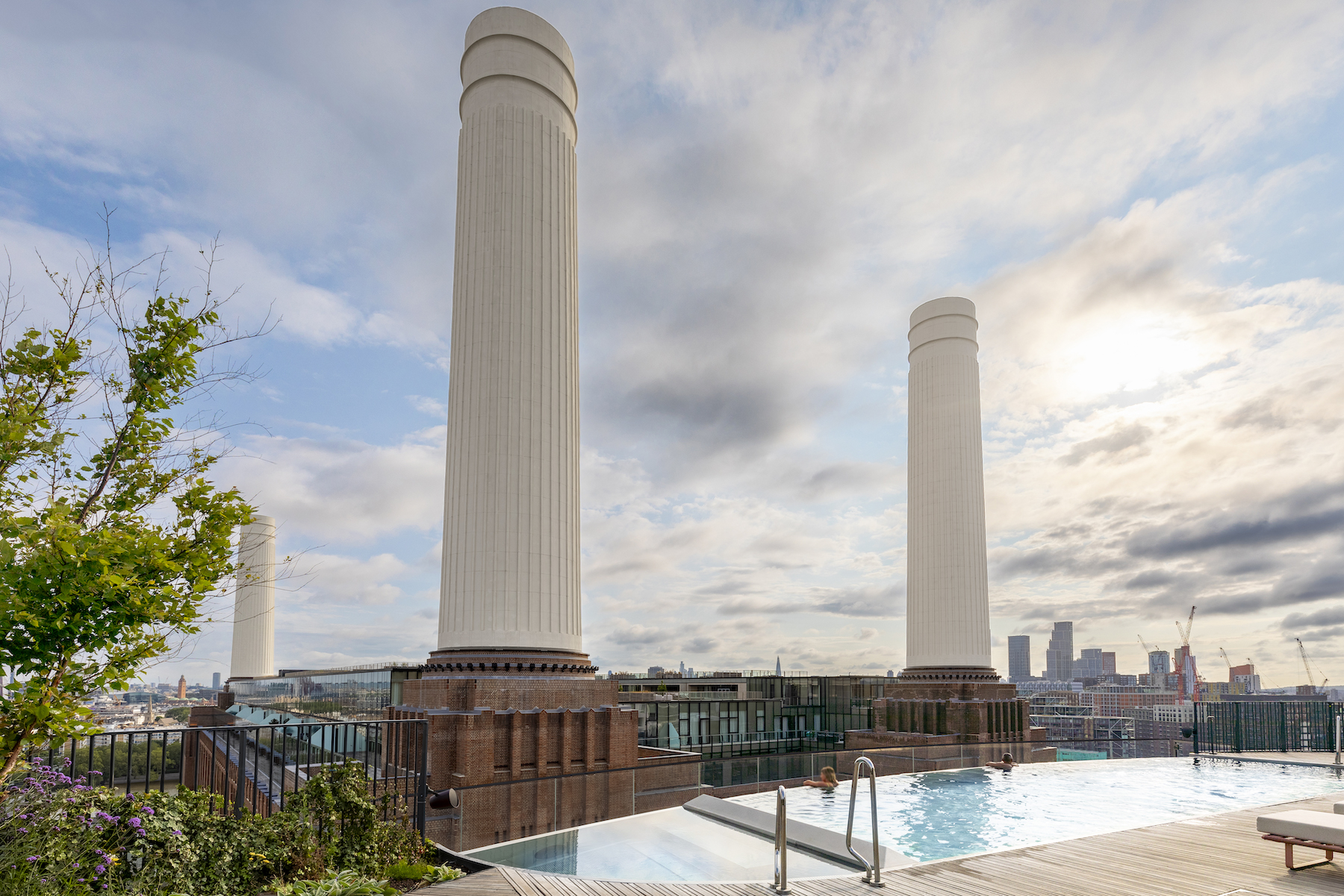
Guests who stay at the hotel have access to their own rooftop garden with a lounge bar and infinity pool that overlooks the power station’s signature chimneys. A Sky Lounge on the 14th and 15th floors features a sunset bar, workspaces, cinema room, and areas for relaxation. Penthouse apartments have their own 3,350-sf private terraces.
Gebrüder Schneider and Radeburger Fensterbau provided 6,500 aluminum elements for the building’s 52,000-sm wave-shaped facade.
Connecting the buildings to the city
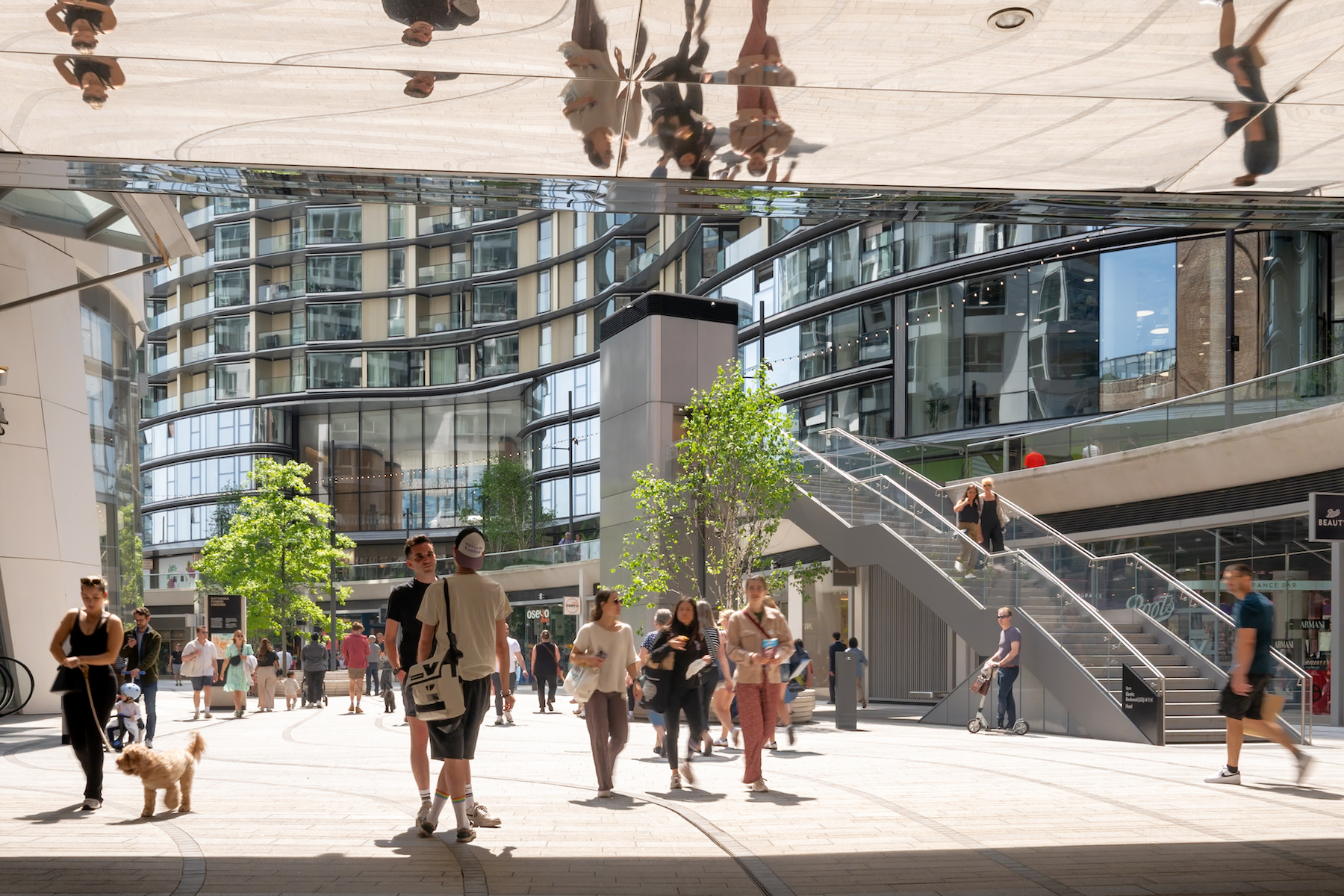
Foster + Partners also designed 50 Electric Boulevard, on the south side of the neighborhood, with approximately 200,000 sf of new office space over 13 above-ground floors, as well as over 100 shops, bars, restaurants, and leisure venues.
Positoned between these two buildings is a double-height pavilion, called the Light Box, with a 240-person capacity for private and communal functions, illuminated by roof lights and appointed by lush greenery. The lobby of 50 Electric Boulevard connects to a pedestrian thoroughfare known locally as a High Street. Underneath 50 Electric Boulevard is a new entrance to the Battersea Power Station subway stop; that entrance will be open by next spring.
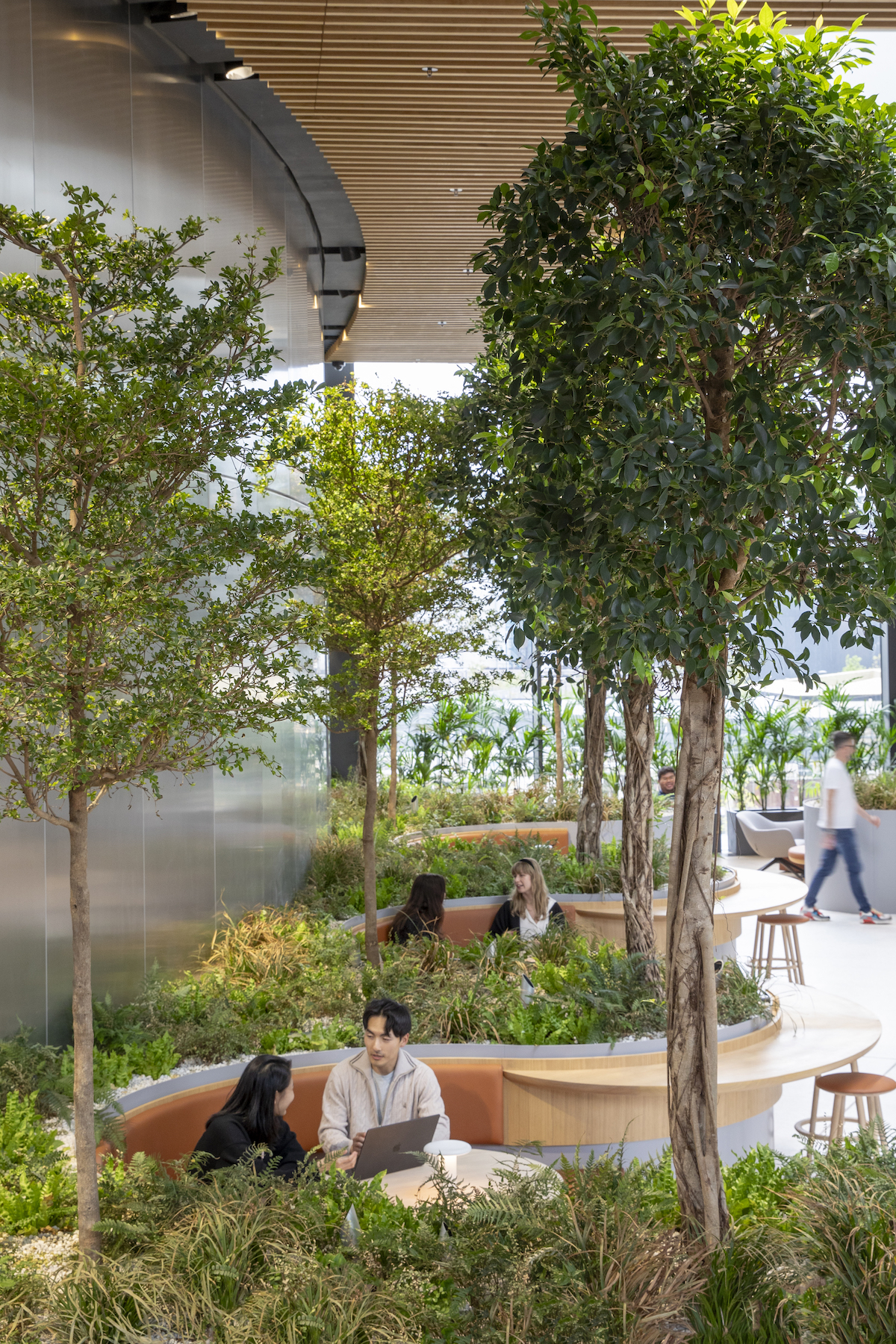
“Our scheme plays an integral role in creating a brand=new neighborhood for London, and most importantly, it connects the iconic power station to the city that surrounds it,” said Grant Booker, Foster + Partners’ Head of Studio Andy Bow, a Senior Partner at the firm, added that Electric Boulevard “acts as a gateway” to the power station from the subway.
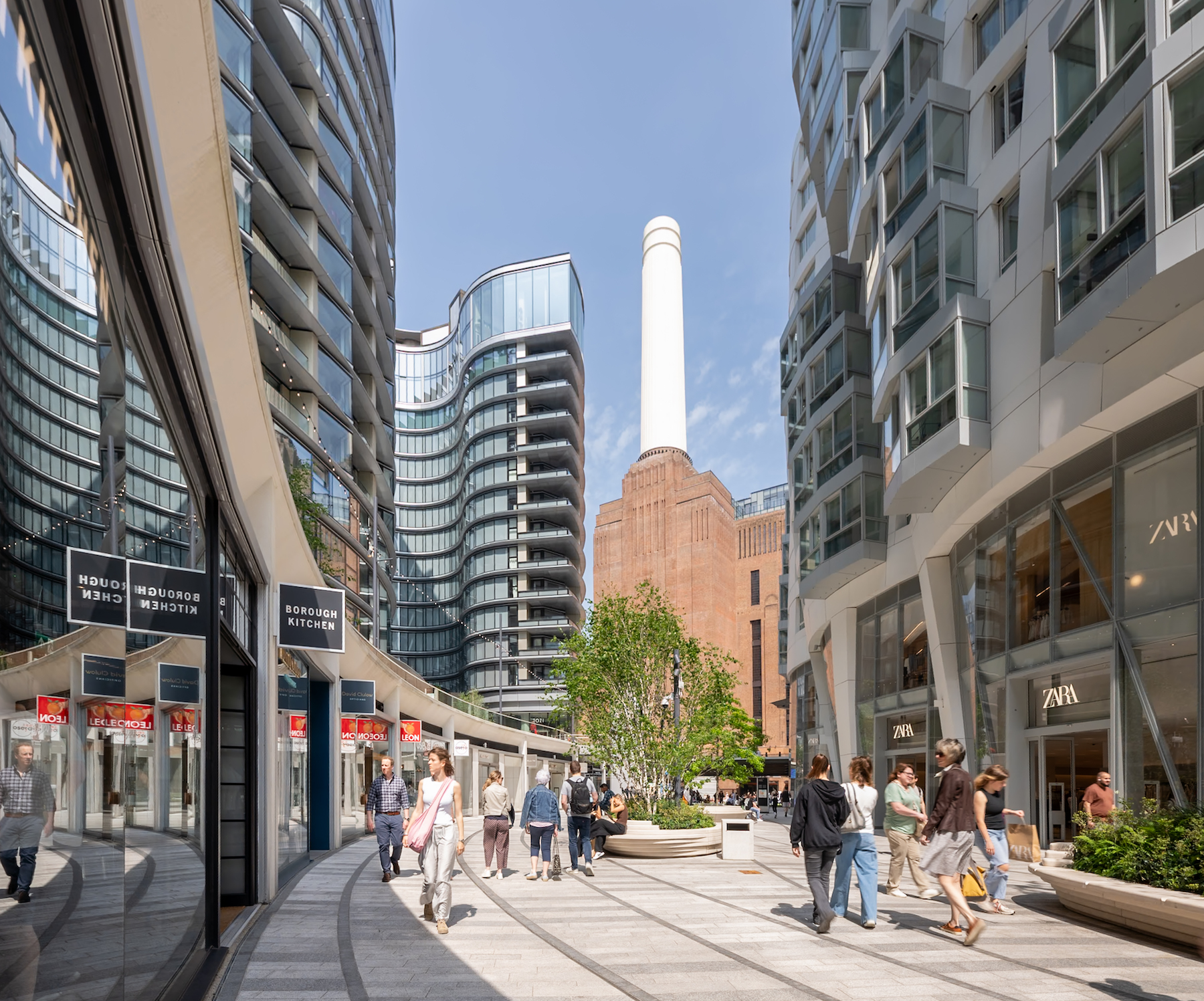
Buro Happold provided multi-disciplinary engineering services across Phase 3. On its website, the firm stated that the geometry of the Gehry buildings is complex, leading to each floor slab having a different plan shape. The structure of the Battersea Rooftop Gardens building is broken up with a series of high-level garden spaces, which cut through the building, creating challenging structural demands.
Related Stories
Adaptive Reuse | Jan 12, 2024
Office-to-residential conversions put pressure on curbside management and parking
With many office and commercial buildings being converted to residential use, two important issues—curbside management and parking—are sometimes not given their due attention. Cities need to assess how vehicle storage, bike and bus lanes, and drop-off zones in front of buildings may need to change because of office-to-residential conversions.
K-12 Schools | Jan 8, 2024
Video: Learn how DLR Group converted two big-box stores into an early education center
Learn how the North Kansas City (Mo.) School District and DLR Group adapted two big-box stores into a 115,000-sf early education center offering services for children with special needs.
Affordable Housing | Dec 14, 2023
What's next for affordable housing in 2024?
As 2023 draws to a close, GBBN’s Mary Jo Minerich and Amanda Markovic, AIA sat down to talk about the future. What’s next in terms of trends, technology, and construction of affordable housing?
MFPRO+ News | Nov 21, 2023
Underused strip malls offer great potential for conversions to residential use
Replacing moribund strip malls with multifamily housing could make a notable dent in the housing shortage and revitalize under-used properties across the country, according to a report from housing nonprofit Enterprise Community Partners.
Office Buildings | Nov 10, 2023
3 important early considerations for office-to-residential conversions
Scott Campagna, PE, Senior Director of Housing, IMEG Corp, shares insights from experts on office-to-residential conversion issues that may be mitigated when dealt with early.
Adaptive Reuse | Nov 1, 2023
Biden Administration reveals plan to spur more office-to-residential conversions
The Biden Administration recently announced plans to encourage more office buildings to be converted to residential use. The plan includes using federal money to lend to developers for conversion projects and selling government property that is suitable for conversions.
Government Buildings | Oct 23, 2023
Former munitions plant reimagined as net-zero federal workplace
The General Services Administration (GSA) has embraced adaptive reuse with Building 48, an exciting workplace project that sets new precedents for how the federal government will approach sustainable design.
Esports Arenas | Oct 10, 2023
Modular esports arena attracts more than gamers
As the esports market continues to grow to unprecedented numbers, more facilities are being developed by universities and real estate firms each year.
Luxury Residential | Oct 2, 2023
Chicago's Belden-Stratford luxury apartments gets centennial facelift
The Belden-Stratford has reopened its doors following a renovation that blends the 100-year-old building’s original architecture with modern residences.
Office Buildings | Sep 28, 2023
Structural engineering solutions for office-to-residential conversion
IMEG's Edwin Dean, Joe Gulden, and Doug Sweeney, share seven key focuses for structural engineers when planning office-to-residential conversions.


